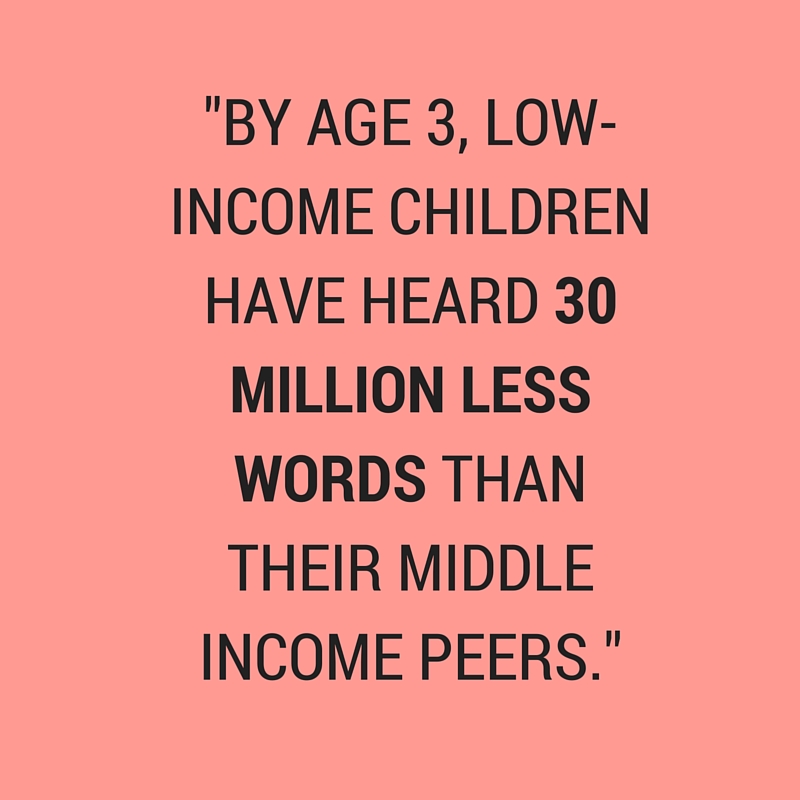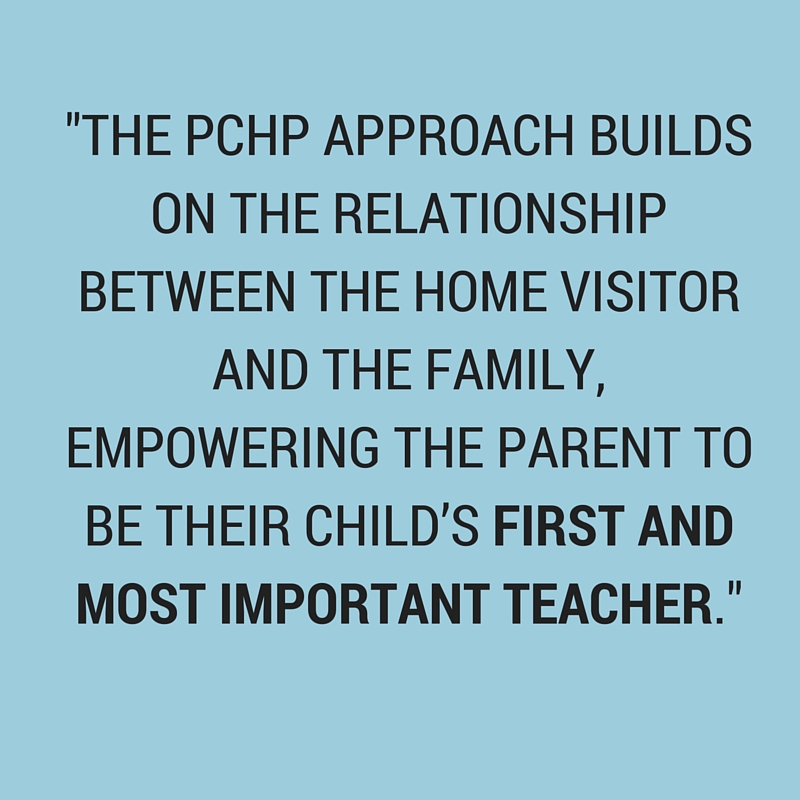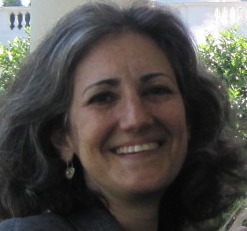Since 1965, The Parent Child-Home Program (PCHP) has been providing ![]() under-resourced families the necessary skills and tools to help their children thrive in school and life. PCHP’s nationwide network of program sites works with low-income families to ensure that they have the knowledge, skills, and resources to achieve their greatest potential in school and in life.
under-resourced families the necessary skills and tools to help their children thrive in school and life. PCHP’s nationwide network of program sites works with low-income families to ensure that they have the knowledge, skills, and resources to achieve their greatest potential in school and in life.
Today, we are excited to have Sarah Walzer, CEO of The Parent-Child Home Program. 2015 marked 50 years of service for the PCHP.
1. How did PCHP begin? How has the program’s vision evolved since it was founded?
PCHP was started in 1965  when educational psychologist Dr. Phyllis Levenstein was asked to develop a program to help reduce the growing number of high school dropouts on Long Island. Based on her research, she concluded that the most effective way to reduce high school dropout rates would be to reach families before their children even entered a classroom and ensure that parents had the knowledge, skills, and materials to prepare their children for school success. With this idea, the model for PCHP was created.
when educational psychologist Dr. Phyllis Levenstein was asked to develop a program to help reduce the growing number of high school dropouts on Long Island. Based on her research, she concluded that the most effective way to reduce high school dropout rates would be to reach families before their children even entered a classroom and ensure that parents had the knowledge, skills, and materials to prepare their children for school success. With this idea, the model for PCHP was created.
The vision has essentially stayed the same – with PCHP focusing on reaching out to underserved families in under-resourced communities and working with them to strengthen parent-child interaction, support and increase reading and play activities in the home, and build language and learning rich home environments. The biggest change since 1965 is that now we work with families speaking over 50 different languages and almost always with a home visitor who speaks their language. Phyllis could not have imagined that when she first piloted the Program.
2. Can you tell us about the PCHP research-based model structure and how it works?
PCHP is based on an extensive body of research that demonstrates that children who receive rich verbal stimulation in their homes (conversation, reading, and play) come to school with the language, vocabulary, and social-emotional skills they need to be successful. Researchers have demonstrated that by age 3, low-income children have heard 30 million less words than their middle income peers, so we know that too many children do not experience the quality verbal interaction they need to succeed. Parent (primary caregiver)-child interaction is critical to closing this word gap and preparing children for school.
Building on this research, the model PCHP provides two years of  intensive, twice-weekly home visits to underserved families when their children are 2 and 3. We match each family with a PCHP early literacy specialist in their community, and most of the time this early literacy specialist shares the family’s cultural background and language. These home visits are for a half-hour, twice-a-week. The half-hour is to make it easy for parents to fit the visits into their schedule and so they can see how little time each day it takes to support their children’s school readiness.
intensive, twice-weekly home visits to underserved families when their children are 2 and 3. We match each family with a PCHP early literacy specialist in their community, and most of the time this early literacy specialist shares the family’s cultural background and language. These home visits are for a half-hour, twice-a-week. The half-hour is to make it easy for parents to fit the visits into their schedule and so they can see how little time each day it takes to support their children’s school readiness.
Over the course of the two years, each family receives at least 92 home visits, 46 new, high-quality books and educational toys, as well as curricular guide sheets that provide the family with tips for verbal interaction, skill development, and additional literacy, music, and art activities. The early literacy specialists model for the parents and children together verbal interaction, reading and play activities that are fun and become part of the families’ regular routines.
It is important to note that PCHP’s approach is one of modeling, not teaching; a non-directive, non-didactic approach that builds on the relationship between the home visitor and the family, empowering the parent to be their child’s first and most important teacher.
3. In November 2014, your response to The New York Time’s Article, “To Help Language Skills of Children, a Study Finds, Text Their Parents With Tips-NYTimes,” stated that texting parents with tips is not enough to close the achievement gap. Can you explain what you mean by this?
Texting parents is a great way to remind and teach parents the importance of conversing and reading with your child; however, by itself it will not close the achievement gap for the most under-resourced families. You don’t actually know if the parent receiving the text can read it or read it in the language of your text. You don’t know if they have access to books to read to their children, if they know how to find age-appropriate reading material, and how to read and talk to a young child in a way that builds language and literacy skills.
School readiness is about so much more than just language skills, it is about the social-emotional skill development that comes from playing games that involve taking turns, supporting children while they try increasingly difficult tasks on their own, etc. These are not all things that can be conveyed or demonstrated to parents via text messages. Some families need more support and the PCHP model can provide the needed materials, modeling, and tools for their children’s’ success.
4. After 50 years, what does the research show about families who complete the PCHP program?
The research not only shows that PCHP participants start school ready to succeed, but it also shows that this success continues as they move through school. A new study just released in February highlights the impact that PCHP is having both on kindergarten readiness and on third grade success. This longitudinal study demonstrates significant long-term outcomes for PCHP graduates based on standardized Washington state assessments of kindergarten readiness, English language proficiency, and third grade academic performance. The three key findings from the study show that signifcantly more PCHP graduates
- started kindergarten better prepared than their peers
- demonstrated English proficiency in kindergarten
- scored significantly higher on third grade WA Reading and Math assessments, including above the state average in math.
5. Looking forward, where do you see PCHP headed in the coming  years? Any projects that you are particularly excited about?
years? Any projects that you are particularly excited about?
We’re hoping to expand to reach over 10,000 families annually. We want to be able to serve as many families as possible. We recently trained the staff for our second site in Chile, which is the 4th country we have opened sites in. We are currently working in 14 states and would like to see that number grow as well. We were recently selected by the GreenLight Fund Philadelphia to be their newest portfolio program, which will mean a four-year expansion there to reach at least 400 families annually. We are particularly excited about expansions like the one in Philadelphia that involve working with housing authorities to support families in public housing and immigrant organizations to support diverse immigrant populations.
6. How can people get involved or find a PCHP nearby?
You can find a PCHP location nearby by going to our website, www.parent-child.org and using the link “Find a PCHP Near You” to find a list of all of our locations and their contact information. Additionally, there is information on our website about how to support the Program, how to start a site if there is not one in your community, and potential volunteer opportunities. Please be sure to also follow us on social media and sign up for our newsletter to stay in the loop. We constantly have exciting news and events to share, and are always happy to welcome anyone who would like to get involved.
 Sarah Walzer has been the Chief Executive Officer of The Parent-Child Home Program, Inc. since 1997, during which time the Program has grown from reaching 800 families in 5 states to over 7,000 families annually in 14 states. Before joining The Parent-Child Home Program, Sarah Walzer was Counsel to the Assistant Secretary for Legislation of the U.S. Department of Health and Human Services where she worked on legislation related to early childhood and domestic violence prevention programs, and the development of crime, substance abuse, and dropout prevention programs for youth. She has presented on The Parent-Child Home Program to many audiences, including the Social Impact Exchange, the Congressional Black Caucus, and the Council of Great City Schools. She serves on the Board of The Petey Greene Program and the Princeton University Bridge Year Advisory Committee. She is a graduate of Princeton University and Harvard Law School.
Sarah Walzer has been the Chief Executive Officer of The Parent-Child Home Program, Inc. since 1997, during which time the Program has grown from reaching 800 families in 5 states to over 7,000 families annually in 14 states. Before joining The Parent-Child Home Program, Sarah Walzer was Counsel to the Assistant Secretary for Legislation of the U.S. Department of Health and Human Services where she worked on legislation related to early childhood and domestic violence prevention programs, and the development of crime, substance abuse, and dropout prevention programs for youth. She has presented on The Parent-Child Home Program to many audiences, including the Social Impact Exchange, the Congressional Black Caucus, and the Council of Great City Schools. She serves on the Board of The Petey Greene Program and the Princeton University Bridge Year Advisory Committee. She is a graduate of Princeton University and Harvard Law School.








